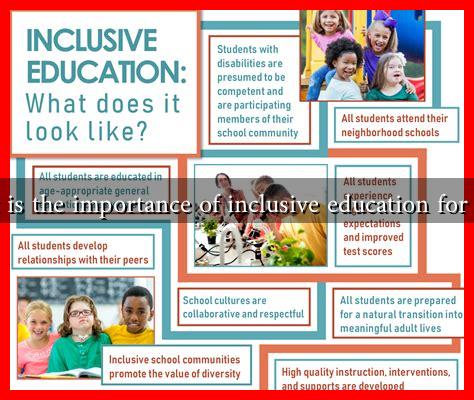-
Table of Contents
The Importance of Inclusive Education for Girls
Inclusive education is a transformative approach that ensures all students, regardless of their background or abilities, have access to quality education. For girls, particularly in developing countries, inclusive education is not just a matter of equity; it is a crucial factor in their empowerment and the overall development of society. This article explores the importance of inclusive education for girls, highlighting its benefits, challenges, and the need for systemic change.
Understanding Inclusive Education
Inclusive education refers to the practice of educating all students together, regardless of their physical, intellectual, social, emotional, linguistic, or other conditions. This approach promotes a sense of belonging and community, allowing girls to learn in an environment that respects diversity and fosters mutual understanding.
Benefits of Inclusive Education for Girls
Inclusive education offers numerous benefits for girls, which can be categorized into social, economic, and personal development aspects:
- Empowerment: Education empowers girls by providing them with knowledge and skills that enhance their self-esteem and confidence.
- Economic Opportunities: Educated girls are more likely to secure better job opportunities, contributing to economic growth and reducing poverty.
- Health Benefits: Educated women tend to make informed health choices, leading to improved health outcomes for themselves and their families.
- Social Change: Educated girls are more likely to advocate for their rights and the rights of others, fostering social change and gender equality.
Case Studies and Statistics
Numerous studies underscore the importance of inclusive education for girls. For instance, a report by the United Nations Educational, Scientific and Cultural Organization (UNESCO) indicates that:
- Every additional year of schooling for girls can increase their future earnings by up to 20%.
- Educated women are more likely to participate in the labor force, with a 50% increase in employment rates compared to uneducated women.
- Countries that prioritize girls’ education see a significant reduction in child marriage rates and improved maternal health outcomes.
One notable case study is the “Girl Rising” initiative, which has successfully highlighted the stories of girls from various countries who have overcome barriers to education. This initiative has inspired global movements advocating for girls’ education, demonstrating the power of storytelling in promoting inclusive education.
Challenges to Inclusive Education for Girls
Despite the clear benefits, several challenges hinder the implementation of inclusive education for girls:
- Cultural Barriers: In many societies, traditional gender roles and cultural norms discourage girls from pursuing education.
- Economic Constraints: Families may prioritize boys’ education due to limited financial resources, viewing it as a better investment.
- Lack of Infrastructure: Inadequate school facilities and resources can make it difficult for girls to attend school, especially in rural areas.
- Safety Concerns: Issues such as harassment and violence in and around schools can deter girls from attending.
Strategies for Promoting Inclusive Education for Girls
To overcome these challenges, several strategies can be implemented:
- Community Engagement: Involving local communities in discussions about the importance of girls’ education can help shift cultural perceptions.
- Financial Support: Providing scholarships and financial incentives for families can encourage them to invest in their daughters’ education.
- Improving Infrastructure: Governments and NGOs should work together to enhance school facilities, making them safe and accessible for girls.
- Policy Advocacy: Advocating for policies that promote gender equality in education is crucial for systemic change.
Conclusion
Inclusive education for girls is not merely an educational issue; it is a fundamental human right that has far-reaching implications for society as a whole. By empowering girls through education, we can break the cycle of poverty, promote gender equality, and foster sustainable development. As we move forward, it is essential to address the challenges that hinder girls’ access to education and implement effective strategies that promote inclusivity. The future of our societies depends on the education of our girls, and it is our collective responsibility to ensure that every girl has the opportunity to learn, grow, and thrive.
For more information on the importance of girls’ education, visit UNESCO’s Girls’ Education page.

